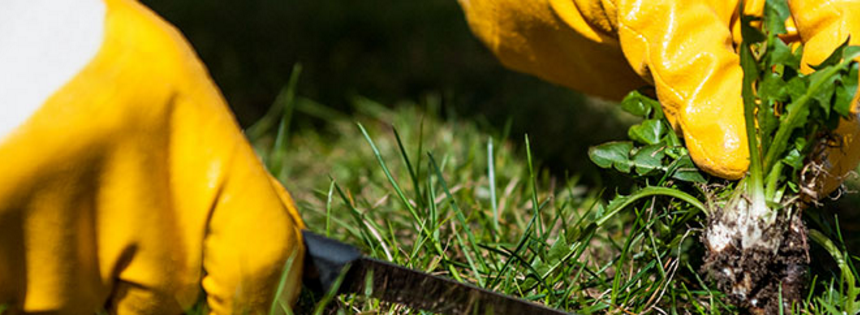
Chemical control of weeds involves the use of herbicides. Herbicides control weeds either by speeding up, stopping, or changing the weed’s normal growth patterns. This affects the weed by drying out the leaves or stems, or by making it drop its leaves.
The trained team at Gardens Help Sell can identify what weeds are infecting your property and use the right control measures to keep them at bay.
Types of herbicides
The use of herbicides is sometimes the only practical and selective method of managing certain weeds. Herbicidal applications are usually cost-effective control methods in bushland areas, particularly when funding is scarce.
In many cases, a weed is only susceptible to 1 specific herbicide, and it is important to use the correct product and application rate for control of that particular weed. Common mistakes include incorrect identification of the weed, or using inappropriate products chosen solely on price. In most cases, weeds must be actively growing to be vulnerable to herbicide treatments.
The Australian Pesticides and Veterinary Medicines Authority (APVMA) controls and regulates pesticides, including herbicides. APVMA assesses chemical products for toxicology, efficacy, environmental impact, residues, breakdown times and occupational health impacts. The APVMA scheme is recognised as one of the world’s most rigorous safeguards.
Lawn Weeds
Most weeds can be easily controlled by applying a selective herbicide which will kill the weed but not harm the grass. Depending upon the degree of infestation repeat applications may be required. Weeds such as bindi are best treated before the plant sets seed and can be dug up and removed by hand.
Lawns that are dry, compacted and in a poor condition will be more susceptible to weed attacks. If you have any areas of lawn where there is damage or there is dead or dying grass, replace the turf to stop weeds from taking over the patch of ground.
The easiest way to prevent weeds from taking over your lawn is to keep your grass in a good condition. This involves ensuring your lawn is getting the required amount of water through natural rainfall and supplemented with watering in times of drought. Regular fertilising with slow release fertiliser at least once a year will assist in keeping the lawn healthy. Regular mowing will also help to remove weed seed heads before they can mature and seed your lawn.
And, of course, if you want some additional help and advice on lawn weeds and how to control them, then the simplest solution is to let the team at Gardens Help Sell look after it all for you.
Contact us now to discuss your specific weeding requirements.
Tags: Herbicide, Weeding, Weeds